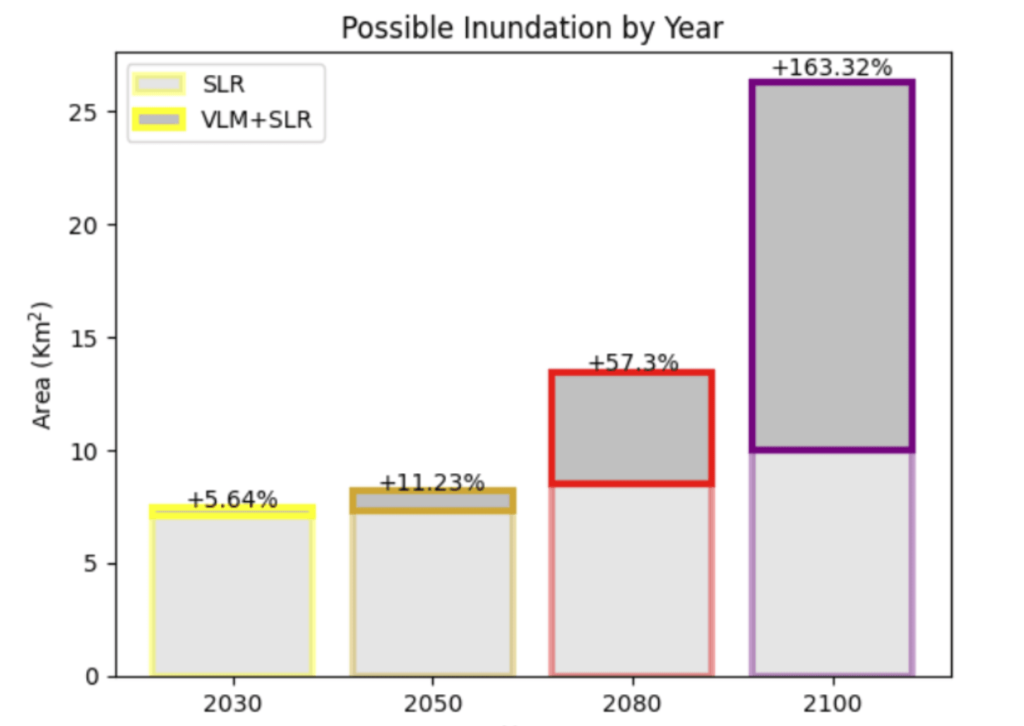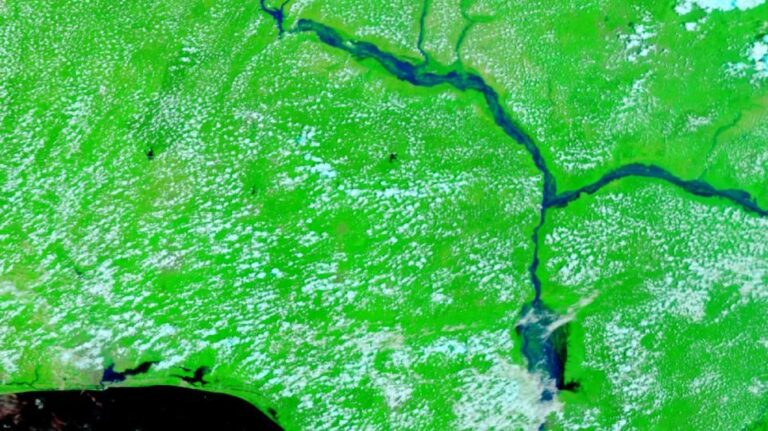Scientists in the University of Colorado Boulder’s Earth Science & Observation Center (ESOC) have taken a detailed look at how the rising sea level is likely to impact the coastal city of Lagos, Nigeria. They found that significant increases in flooding are likely by the end of the century when accounting for land movement along the coastline.
The work combined the impact of vertical land motion – for example, when groundwater depletion lowers the elevation of a city – with sea-level rise projections. The technique is expected to be meaningful to city planners and emergency managers in the face of a rapidly changing climate.
“A lot of global sea-level rise projections for flooding don’t always include the vertical land motion component,” said Joel Johnson, geophysics PhD student at CU Boulder, who works with CIRES fellow Kristy Tiampo. Johnson presented his research at the 2023 AGU Conference in San Francisco in December. “As more time goes on, decades into the future, we can see how much more area is at risk of flooding with the vertical land motion as opposed to without it.”
Johnson and his colleagues, including ESOC PhD student Eduard Heijkoop, focused their work on Lagos – a quickly growing coastal city with a population of 15 million people. The study combined satellite data on sea-level rise, tides and rates of vertical land motion to create more accurate flood projections for Lagos neighborhoods in 2030, 2050, 2080 and 2100 – with the largest increases predicted in the latter half of the century.
The team used data and models to project coastal flooding down to the millimeter resolution in some places, and they made predictions with and without vertical land motion included. By projecting current vertical land motion into the future, the authors could narrow down which areas of the city may be at greater risk of flooding, and emergency managers could alert residents early.
Fortunately, the study suggests that areas with the greatest amount of subsidence around Lagos are in less populated areas. The work is still in progress, and future work will include applying the same methods to other coastal cities around the world.
“We’re using a lot of different data sets and there are a lot of different sizes, so there are still uncertainties,” said Johnson. “Eventually, I’d love to get this to a point where local governments or insurance can use this tool.”

Read more of the latest hydrology updates from the meteorological technology industry here



